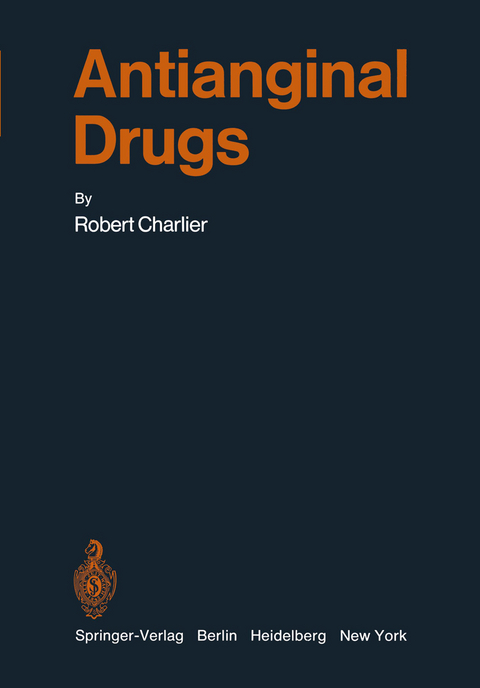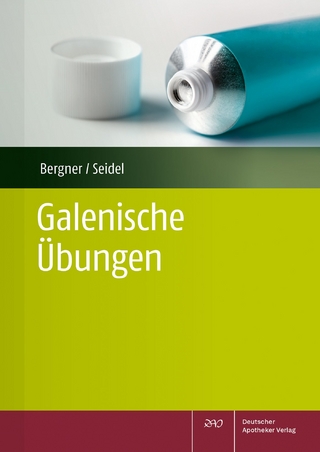
Antianginal Drugs
Springer Berlin (Verlag)
978-3-642-65167-0 (ISBN)
If the numerous therapeutic acquisitions of the past few years have enriched very different fields of human pathology, it does seem that coronary pathology has been given very special attention, as witness the wide variety of antianginal medications placed at the disposal of the medical profession. There are various explanations for this state of affairs, one of them probably being that the medica tions successively proposed do not fully satisfy the practitioner and another that the total number of individuals suffering from the clinicaI manifestations of coronary heart disease offers, by its size, a vast profit potential for the pharma ceuticaI industry. This field of applications opens up such prospects that it has encouraged a prolific amount of competition between various research laborato ries, and it is no exaggeration to say that every major firm has its individuaI anti anginaI drug in its therapeutic cataIogue. A further factor has aIso contributed enormously to this proliferation of medi cinal preparations intended for the treatment of angina pectoris: this is the rapid advance in our knowIedge of the physiopathoIogy of angina, which in turn has produced originaI concepts of pharmacological and biochemical research. As a result, there have emerged new substances whose action mechanisms have claimed to be best suited to the cardiovascular disorders responsible for cardiac pain.
Coronary Atherosclerosis: General Considerations.- Epidemiology of Coronary Atherosclerosis.- Clinical Manifestations of Coronary Atherosclerosis.- General Therapeutic Measures in Angina Pectoris.- Physical Training in Angina Pectoris.- Treatment of Determining Factors of Atherosclerosis - of Formed Anatomical Lesions: Surgery.- - of Predisposing Factors.- - of the Anginal Syndrome.- I. Pathophysiology of Angina Pectoris.- 1. Pathophysiology of the Anginal Attack.- 2. Cardiac Dynamics during the Anginal Attack.- 3. Part Played by Hypersympathicotony in the Anginal Attack.- 4. Trends in Pharmacological Research for the Development of Antianginal Medications.- II. Haemodynamic Basis for Coronary Pharmacology.- General Considerations.- Blood Pressure.- Myocardial Oxygen Consumption.- Cardiac Work.- Cardiac Output.- Heart Rate.- Regulation of Coronary Circulation.- III. Pharmacological Methodology for Testing Antianginal Drugs.- Coronary Blood Flow.- 1. Measurement of Coronary Outflow.- 2. Measurement of Coronary Inflow.- 3. Nutritional Myocardial Micro-Circulation.- 4. Collateral Coronary Circulation.- 5. Experimental Chronic Coronary Insufficiency.- Measuring Cardiac Output.- Measuring Cardiac Work.- Measuring Myocardial Oxygen Consumption.- IV. Clinical Methods for Assessment of the Therapeutic Value of Antianginal Medications.- Diagnosis of Angina Pectoris.- Clinical Assessment of Antianginal Drugs.- V. Pharmacological and Clinical Features of Antianginal Drugs.- Nitrites.- Papaverine.- Xanthines.- Khellin.- Recordil.- Monoamineoxydase Inhibitors (Maoi).- Irrigor.- Segontin.- Amplivix.- Isoptin.- Persantine.- Intensaine.- Ustimon.- Ildamen.- Clinium.- ?-Adrenergic Blocking Drugs.- Cordarone.- Miscellaneous.- Section no. 1.- Adenylocrat.- Aminocetone.- Anginin.-Baralgin.- Baxacor.- Eucilat.- Griseofulvine.- Mederel.- Opticardon.- Pexid.- Piridoxilate.- Polarising Solutions.- Sandolanid.- Surheme.- Terodiline.- Tromcardin.- Vastarel.- Vialibran.- Section no. 2.- Morphine.- Barbiturates.- Ethyl Alcohol.- Valium.- Phenothiazines.- Diphenylhydantoin.- Cinchona Alcaloids.- Daucarine.- Vitamin E.- Hexoestrol.- Adenosine and Related Substances.- Thyroxine.- Section no. 3.- Phenoxy-Isopropyl-Norsuprifen.- Phenyl-Isobutyl-Norsuprifen.- Cyclospasmol.- Vasculat.- Reserpine.- Padutin.- Recosen.- Cortunon.- Heparin.- Dicoumarol.- Ilidar.- Priscol.- Hydergine.- Ronicol.- Poly-Methoxyphenol Derivatives.- Triparanol.- Varia.- Carotid Sinus Nerve Stimulation.- Prospects of future research.- Table of Side Effects in Man.- References.- Author Index.
| Erscheint lt. Verlag | 12.11.2011 |
|---|---|
| Reihe/Serie | Handbook of Experimental Pharmacology |
| Zusatzinfo | X, 442 p. |
| Verlagsort | Berlin |
| Sprache | englisch |
| Maße | 170 x 244 mm |
| Gewicht | 780 g |
| Themenwelt | Medizin / Pharmazie ► Allgemeines / Lexika |
| Medizin / Pharmazie ► Pharmazie ► PTA / PKA | |
| Schlagworte | Drug • Drugs • heart • Pathology • Research |
| ISBN-10 | 3-642-65167-4 / 3642651674 |
| ISBN-13 | 978-3-642-65167-0 / 9783642651670 |
| Zustand | Neuware |
| Haben Sie eine Frage zum Produkt? |
aus dem Bereich


